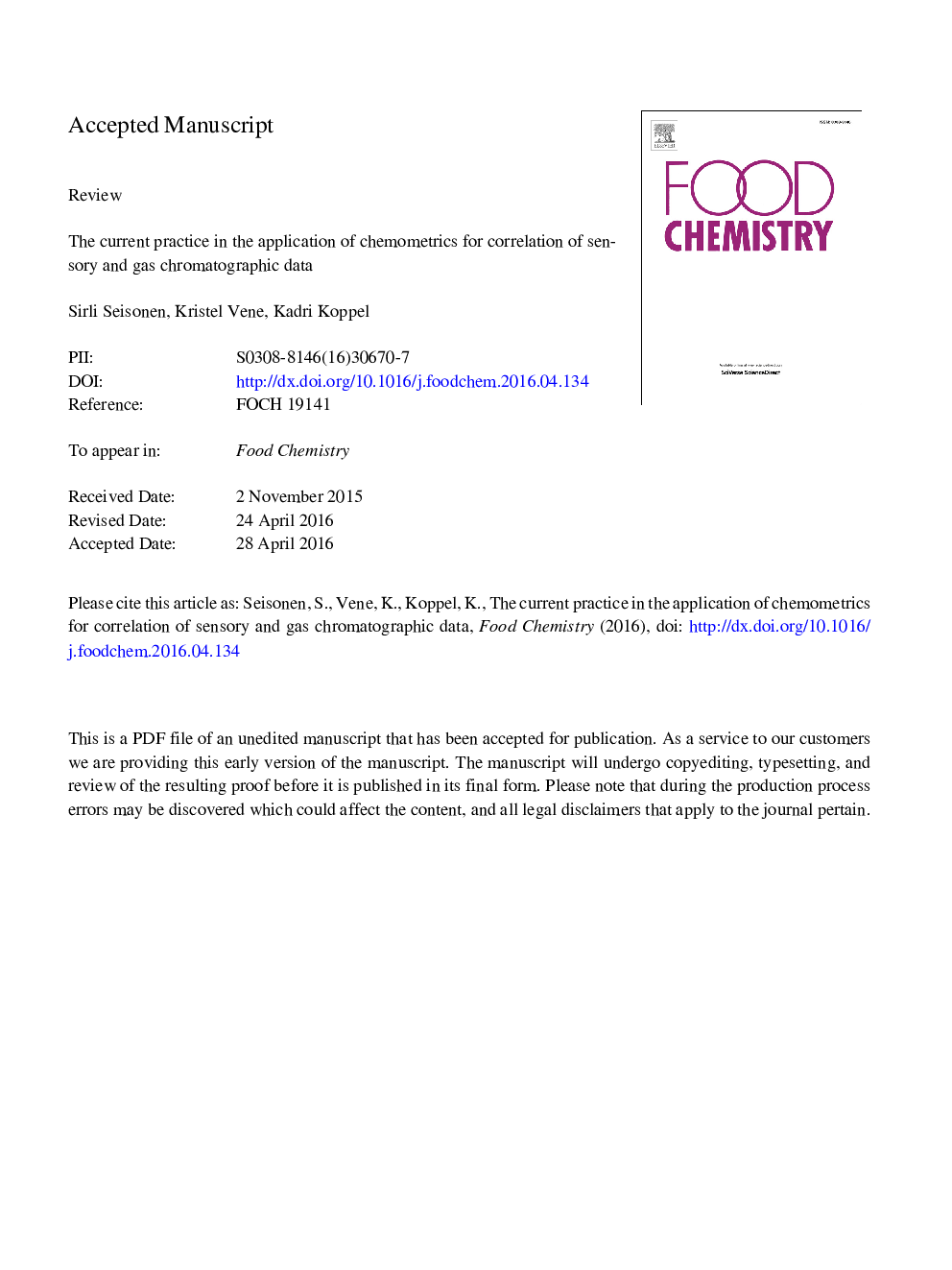| Article ID | Journal | Published Year | Pages | File Type |
|---|---|---|---|---|
| 7587964 | Food Chemistry | 2016 | 41 Pages |
Abstract
A lot of research has been conducted in correlating the sensory properties of food with different analytical measurements in recent years. Various statistical methods have been used in order to get the most reliable results and to create prediction models with high statistical performance. The current review summarises the latest practices in the field of correlating attributes from sensory analysis with volatile data obtained by gas chromatographic analysis. The review includes the origin of the data, different pre-processing and variable selection methods and finally statistical methods of analysis and validation. Partial least squares regression analysis appears as the most commonly used statistical method in the area. The main shortcomings were identified in the steps of pre-processing, variable selection and also validation of models that have not gained enough attention. As the association between volatiles and sensory perception is often nonlinear, future studies should test the application of different nonlinear techniques.
Keywords
Related Topics
Physical Sciences and Engineering
Chemistry
Analytical Chemistry
Authors
Sirli Seisonen, Kristel Vene, Kadri Koppel,
